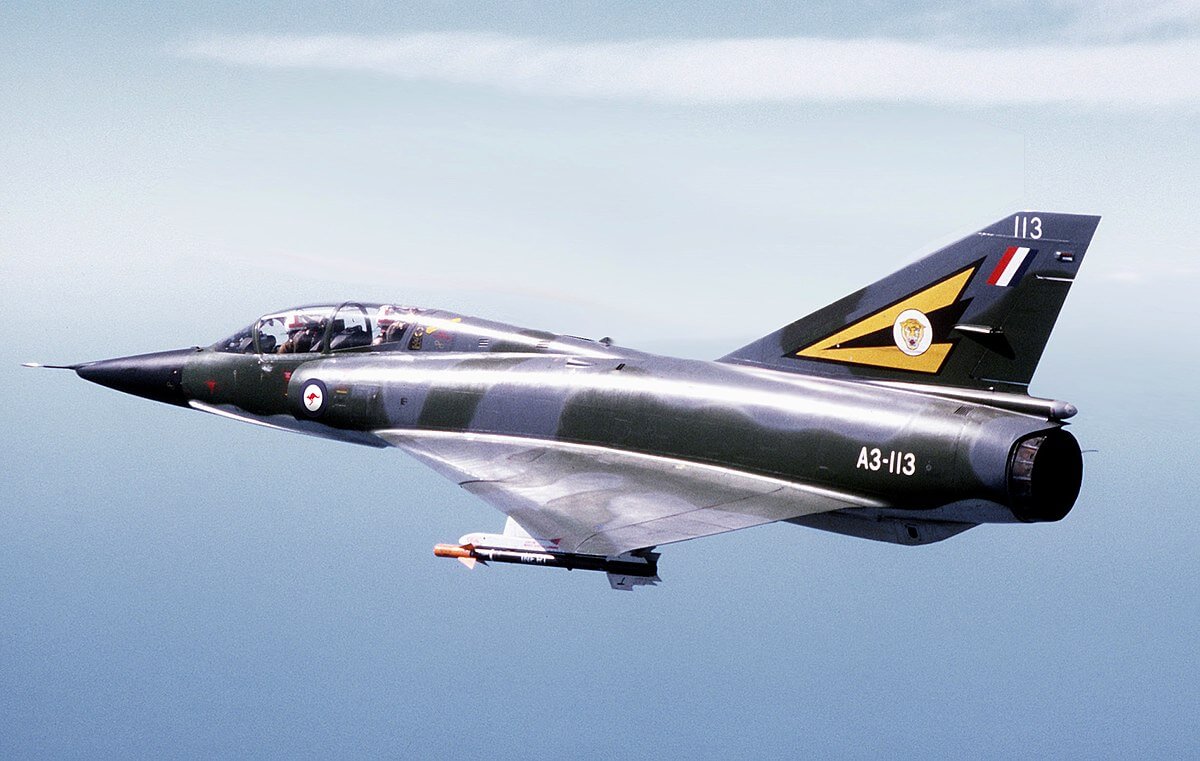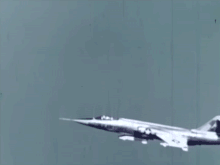During World War II, a secret intelligence agency known as the Office of Strategic Services controlled the flow of the war by collecting foreign intelligence and training special-operation soldiers. This was also the beginning of espionage. After the war, the OSS was dismantled. Many secret agencies were created and put down, but the Central intelligence agency was finally created under the National Security Act of 1947. They were responsible for discovering intelligence, securing its validity and deciding the level of national security.
During the Cold War, President Eisenhower gave the CIA 46 million dollars to provide America with information of the Soviet Union. The CIA supported the invasion of Cuba by providing training to the locals. They also discovered the Soviet missiles in Cuba. From the 1950s to 1970s, the CIA operated AirAmerica, a cargo and passenger airline company, to allow access to areas in Asia. However, they were suspected of being involved with the opium trade in China which eventually caused the operation to be suspended. The CIA continued to control the underground of America and remained as secretive as possible.
Wednesday, January 30, 2019
A Quick Guide to: Second Generation Fighter Jets
Defining Feature of this Generation: The Sound Barrier
When the first generation of jets arrived in combat, their speed was revolutionary, allowing them to reign supreme over the slower propeller-driven fighters. But the designers kept innovating, inventing new theories and techniques to allow faster flight. Afterburners arrived, as did cleverly-designed 'area rule' fuselages that decreased drag at high mach numbers. These made aircraft more powerful, but now they were too fast to use guns very well. This generation saw the widespread introduction of air-to-air missiles, which allowed extremely accurate combat at longer ranges. These missiles were far from perfect and were fairly easy to evade, but they paved the way for future generations of missiles.
United Kingdom
Hawker Siddeley Harrier
When the first generation of jets arrived in combat, their speed was revolutionary, allowing them to reign supreme over the slower propeller-driven fighters. But the designers kept innovating, inventing new theories and techniques to allow faster flight. Afterburners arrived, as did cleverly-designed 'area rule' fuselages that decreased drag at high mach numbers. These made aircraft more powerful, but now they were too fast to use guns very well. This generation saw the widespread introduction of air-to-air missiles, which allowed extremely accurate combat at longer ranges. These missiles were far from perfect and were fairly easy to evade, but they paved the way for future generations of missiles.
 |
| The first supersonic plane, the Bell X-1 |
English Electric Lightning
Being one of the closest countries to the Soviet Bloc, the UK was feeling threatened by the USSR's nuclear bombers. Since there wouldn't be much time between the detection of the bombers and nuclear annihilation, the UK needed a fighter-interceptor with a dazzling climb rate. This necessitated two engines but the engines at the time were somewhat unreliable. If the engines were next to each other, failure in a single engine would cause the plane to spin to one side, with potentially fatal effects. So the decision was taken to outfit the amazingly fast Lightning with the two engines stacked one above the other.
 |
| Vertical at full afterburner |
Under the aforementioned threat of nuclear apocalypse, the UK determined that runways were a very vulnerable target for an initial strike. Thus, a requirement was issued for an aircraft capable of either short takeoffs or vertical takeoff. Thus, Hawker built the Harrier around the specially-designed Rolls-Royce Pegasus engine. The original aircraft had an appalling attrition rate, but later marks improved the reliability. Surprisingly, one large customer was the US Marine Corps, as the Harrier was able to operate from almost any ship with a helipad (during the Falklands conflict one landed on a container ship). Even today it is one of only two production vertical takeoff fighters ever made.
 |
The USA
Convair F-106 'Delta Dart'
The F-106 was built to be the ultimate interceptor: insanely fast, well-armed, and an insane climb rate (29,000 feet per minute). It could go 2.3 times the speed of sound and carried a massive 20mm rotary cannon and two infra-red or radar homing missiles. This thing was a bomber destroyer, pure and simple. After it was retired in the 80's, many were converted to pilot-less drones and shot down in missile tests.
Lockheed F-104 Starfighter
Convair F-106 'Delta Dart'
The F-106 was built to be the ultimate interceptor: insanely fast, well-armed, and an insane climb rate (29,000 feet per minute). It could go 2.3 times the speed of sound and carried a massive 20mm rotary cannon and two infra-red or radar homing missiles. This thing was a bomber destroyer, pure and simple. After it was retired in the 80's, many were converted to pilot-less drones and shot down in missile tests.
 |
| "Fox 2! Fox 2!" |
There's no other way to put it. This aircraft was insane. Lockheed consulted pilots flying over Korea and found that they wanted a small, simple plane with excellent performance. To obtain this performance, the wings were made to perform very well at high speeds. This required them to be extremely thin, so thin that they presented a cut hazard to ground crew and had to have protectors fitted while on the ground. As if this wasn't already sketchy enough, the ejection seat fired downwards, meaning that low-altitude ejection was suicide. Pilots quickly dubbed the F-104 the "Missile With a Man in it"
France
North American F-100 Super Sabre
Designed as a follow-on the the small F-86 Sabre discussed previously, the F-100 was supposed to be a powerful air-superiority fighter. Over Vietnam, it was adapted into a fighter-bomber, working alongside the bigger and faster F-105 Thundercheif.
 |
France
Dassault Mirage III
In the late 50's, France wanted in on the jet fighter game. They had a few mediocre fighters and bombers, but nothing special. Dassault, having done some research on tailless delta aircraft, submitted the Mirage III to the French. During the tests, the Mirage became the first plane to go twice the speed of sound in level flight. It spawned a whole series of legendary aircraft.
The USSR
Mikoyan-Gurevich MiG-21
This jet has surpassed the realms of superlatives. It was that good. It was also a very Soviet design. It was built as cheaply and quickly as possible. Damaged aircraft were simply replaced. Designed as an interceptor, it had an absolutely crazy climb rate of 44,000 feet per minute, and was armed with four to eight air-to-air missiles. Even though it was relatively slow (only 1.7 times the speed of sound), it served many Soviet-influenced nations very well. It is still the most-produced supersonic jet. Fun fact: upon taking off, the MiG-21 had only about 30 minutes of fuel, making it one of the shortest-ranged warplanes.
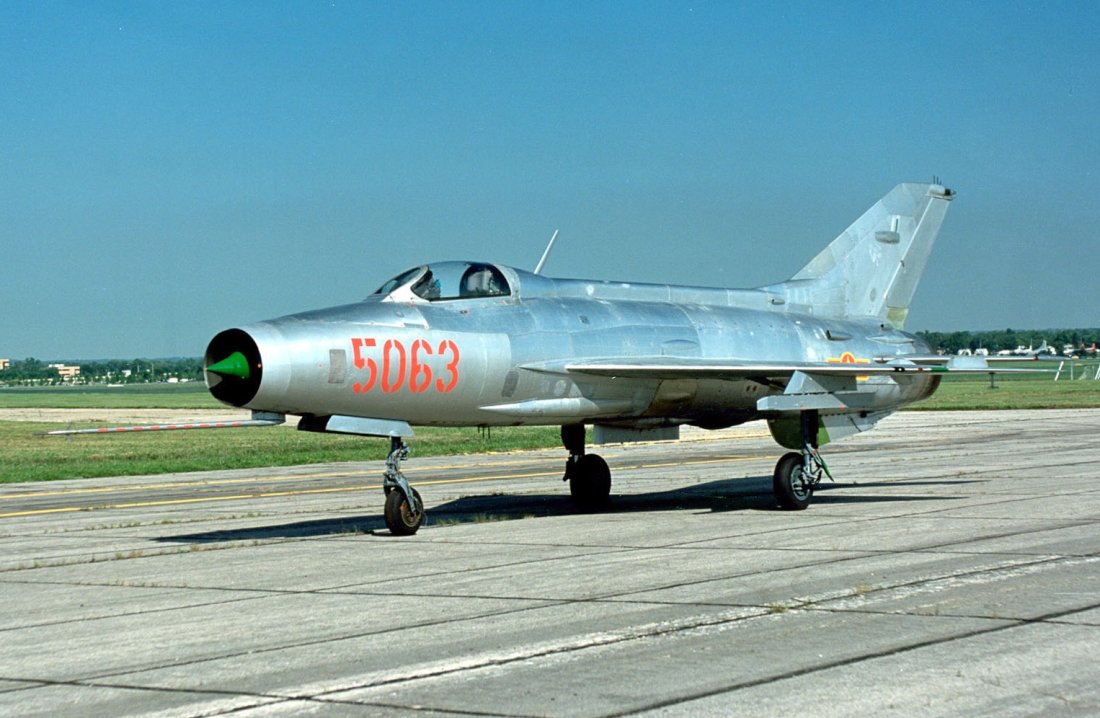 |
| Even on the apron it looks fast |
Tuesday, January 29, 2019
Sputnik
After World War II, the US and the Soviet Union both wanted global control. On October 4, 1957, the Soviet Union launched Sputnik I, the first artificial satellite to orbit Earth. Even though it only made a beeping sound around Earth, it impacted the American society greatly. Not only was the Soviet Union ahead of them in terms of the space race, but also they were wary that the Soviet Union can spy and launch a nuclear attack at any given point and time on the US using satellite technology. The US responded by approving funding for US space projects and encouraging students to become engineers. Sputnik orbited Earth for three weeks before its batteries died. Sputnik provided scientists with valuable information such as the density of the upper atmosphere and the propagation of radio signals in the ionosphere.
Fidel Castro's Youth
Castro was born on August 13, 1926, in Birán, a small town in eastern Cuba. His father came to the island during the Roosevelt's Cuban War of Independence. Soon after he became an established and wealthy Spanish sugarcane farmer. Castro attended a couple of Jesuit school and excelled at baseball. Later he enrolled as a law student to the University of Havana. College was where Castro's interest in politics stemmed; he joined the anti-corruption Orthodox Party. He graduated, and three years later Castro led around 120 men in an attack on Cuba, he failed and was sent to prison. Castro was released 2 years later and plotted other ideas to overthrow the government. Finally, 9 years after graduating college, Castro took over Cuba and became the new Prime minister until 2008.


Monday, January 28, 2019
Rosa Parks

She was someone in the civil rights movement. This is best know for her pivotal role in Montgomery bus. Everyone best knows her as the "mother of freedom movement," she did not want to give her sit up to a white man when she was on the bus because she believes that she had the same rights as everyone else. She did not see herself any different.
Rosa Parks: The Ignition of the Civil Rights Movement
Born in 1913 in Tuskegee, Alabama, Rosa Parks grew to be a seamstress in the times of extreme segregation, especially in the south. Living in Alabama, Rosa Parks was among the most extreme white supremacists in the United States. On December 1st, 1955, she refused to give up her seat in the front of the bus to a white man. In the laws of segregation surrounding this time period, she was supposed to move to the back of the bus for that white man, but she refused. She was arrested without a second thought, and although she wasn't the first black person to stand up to these unjust laws, her case ignited an almost unfathomable response. Her progression through her trial and court case, which only rose to a state level, sparked a bus protest led by Martin Luther King Jr. This was arguably the beginning of the Civil Rights Movement. This year-long protest, including a lawsuit on the Montgomery buses, Browder v. Gayle, resulted in the ruling that the buses were to be desegregated. The Civil Rights Movement only picked up steam after that, pushing forwards to gain the equality that they were so frequently denied. Rosa Parks' "federal disobedience" was the ignition that started the Civil Rights Movement in its glory.
Friday, January 25, 2019
Little Boxes
"Little Boxes" was written in 1962 by Malvina Reynolds. Numerous other artists have covered this song, including Walk Off the Earth and Linkin Park. Malvina Reynolds was a folk and blues singer and political activist in the 1950s and '60s. She is most known for her songwriting - she wrote several popular songs including "Little Boxes" (sung by Pete Seeger), "Turn Around" (sung by Harry Belafonte), and "Morningtown Ride".
"Little Boxes" was about the development of suburbia and the era of conformity. Reynolds described suburban tract housing as "little boxes" made of "ticky tacky", or cheap material. And although they have different colors, in the end, they "all look just the same". A glance at pictures of 1950s suburbs makes clear the inspiration for Reynolds song - all the houses look just the same.
In the 1950s, methods developed to make housing much cheaper. Pre-fabricated housing design was used so it was easy and cheap to build entire neighborhoods on a tract of land. These cookie-cutter houses are what Reynolds refers to in her song. The conformity in housing reflected the conformity that settled across America in the 1950s. Nobody wanted to rock the boat after dealing with conflict for so long.
| An artistic recreation of the "little boxes" |
| Suburbia in the 1950s |
Golden age of Television
In this era (late 1940s and ealry 1960s) there were live television production in the United States. Television programming had a huge impact on American Culture. It was really popular back then that poeple would skip their appoitment just to watch a show because if they don't watch it on time, they wouldn't see it again. That's because it was a live show and most shows were about 60-90 mins long. Gradually the live shows were overtaken by serial dramas filmed in Hollywood. This is when a lot of actors started getting popular.


Thursday, January 24, 2019
Khrushchev
Wednesday, January 23, 2019
Tsar Bomba: The Largest Thermonuclear Device Ever Built
In 1954, just nine years after the first atomic bomb was detonated, the USSR began researching a "superbomb," capable of more than four times the explosive yield of the largest weapon detonated by the United States. The bomb, which found its roots in the Cold War, was developed from 1954 to 1961. This was an extraordinarily massive project, combining the issues of material sourcing and bomber carrying capacity with the more abstract ones of political fallout, the "bomber gap," and the tensions of the Cold War.
In 1961, the Tsar Bomba was completed. It was a three-stage bomb, which is in effect three bombs, the first one a fission bomb that compresses the second, which in turn compresses the third to release an enormous amount of energy. It is hypothesized that the Tsar Bomba actually had multiple third stages, resulting in a vastly increased yield.
The Tsar Bomb had the potential of a 100-megaton yield, which would have been about seven times greater than the Castle Bravo test and about 6,700 times the "Little Boy" test. The actual yield was adjusted by the directors of the program shortly before it was tested, since they felt it would be more effective if the pilots actually survived the test. The Tsar Bomba weighed in at almost 30 tons, about the weight of a T-34 tank. This made it very difficult to transport, especially when combined with its enormous size, at 26 feet long.
The bomber, a Tupolev Tu-95, was modified specially for the Tsar Bomba test. Its bomb bay doors and fuselage fuel tanks were removed, meaning that it had barely enough fuel to reach the target. Since the Tsar Bomba was equipped with an enormous, 1600-square-meter parachute that weighed almost a ton, the Tu-95 would be able to escape to about 30 miles away before the bomb detonated. This gave the pilot and crew a 50% chance of survival. If it had been 100 megatons, this would have dropped to about 0%.
The bomb was tested at 11:32 in the morning on Severny Island, above the Arctic Circle. The mushroom cloud reached over 59 miles in the air and could be seen from two hundred miles away. The detonation broke windows up to 560 miles away, in Norway and Finland, and had the potential to cause third-degree burns at 100 miles. The shockwave circled the earth three times, and the Tu-95 dropped a full kilometer in the air after being caught in the shockwave before recovering. Russian radio stations did not mention the test, instead calling attention to the two-thousand times smaller twenty-kiloton Mink test conducted underground by the United States the day before.
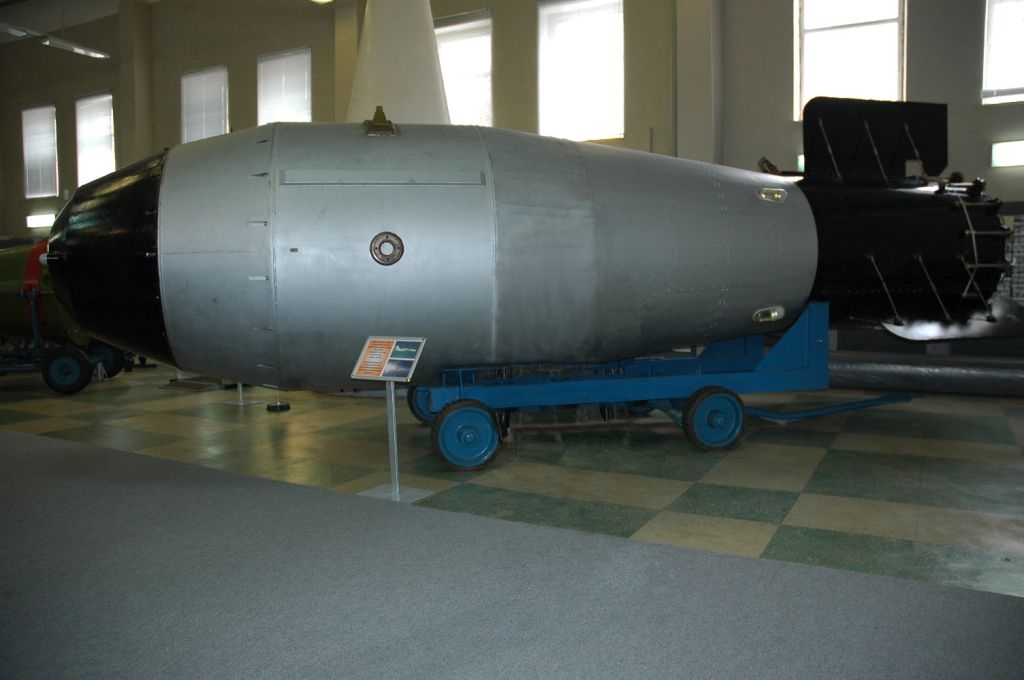 |
| Tsar Bomba casing |
The Tsar Bomb had the potential of a 100-megaton yield, which would have been about seven times greater than the Castle Bravo test and about 6,700 times the "Little Boy" test. The actual yield was adjusted by the directors of the program shortly before it was tested, since they felt it would be more effective if the pilots actually survived the test. The Tsar Bomba weighed in at almost 30 tons, about the weight of a T-34 tank. This made it very difficult to transport, especially when combined with its enormous size, at 26 feet long.
 |
| A Tu-95 at Engels Air Force Base |
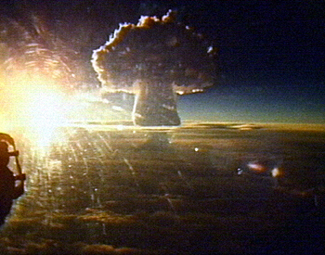 |
| The mushroom cloud—from 100 miles away. At the time this was taken, the cloud was 40 miles high. The shockwave caught up with the observer plane just a few seconds later. |
Laika
Laika, a Russian dog taken off the Moscow streets, was the first animal (not counting microbes) in space. She rode the Sputnik-2 satellite inside a specially prepared capsule. The satellite was launched on November 3rd, 1957.
Laika, also called "Little Bug," "Little Curly," and "Little Lemon" by the Soviet scientists, was found in the Moscow streets. This was a deliberate choice by the Soviet space program, since they reasoned that the dogs on Moscow's streets would have gotten used to long periods of bitter cold and low food. Two other dogs were also trained, one as the backup passenger in case Laika fell ill, and one as the "control dog" to keep on the ground. Laika was described as "quiet and charming" by the program leader, and never quarreled with the other dogs. She, along with the other dogs, was trained using a centrifuge and accustomed to the noise of a spaceship launch—although the training did tend to double the pulses of the dogs.
Dr. Vladimir Yazdovsky took Laika home to play with his children before the launch, later writing that her life was going to end so soon and that he wanted "to do something nice for her."
The capsule that Laika was placed in had been roughly designed and built to the best of the USSR's ability with the extremely limited time that they had. The capsule was designed within four weeks and built during this time. As such, the temperature control did not function adequately, since part of the thermal insulation tore off during the launch. Laika died between five and seven hours into the journey as a result of overheating. Her sacrifice to science was not forgotten, and she is memorialized on the Monument to the Conquerors of Space, located in Moscow.
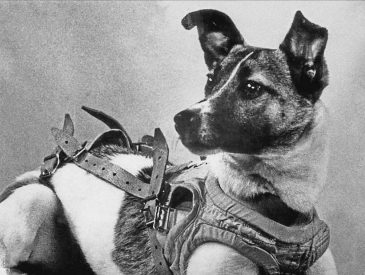 |
| I think the best name given to her was "Limonchik," or "Little Lemon" |
Laika, also called "Little Bug," "Little Curly," and "Little Lemon" by the Soviet scientists, was found in the Moscow streets. This was a deliberate choice by the Soviet space program, since they reasoned that the dogs on Moscow's streets would have gotten used to long periods of bitter cold and low food. Two other dogs were also trained, one as the backup passenger in case Laika fell ill, and one as the "control dog" to keep on the ground. Laika was described as "quiet and charming" by the program leader, and never quarreled with the other dogs. She, along with the other dogs, was trained using a centrifuge and accustomed to the noise of a spaceship launch—although the training did tend to double the pulses of the dogs.
Dr. Vladimir Yazdovsky took Laika home to play with his children before the launch, later writing that her life was going to end so soon and that he wanted "to do something nice for her."
The capsule that Laika was placed in had been roughly designed and built to the best of the USSR's ability with the extremely limited time that they had. The capsule was designed within four weeks and built during this time. As such, the temperature control did not function adequately, since part of the thermal insulation tore off during the launch. Laika died between five and seven hours into the journey as a result of overheating. Her sacrifice to science was not forgotten, and she is memorialized on the Monument to the Conquerors of Space, located in Moscow.
Monday, January 21, 2019
The Berlin Candy Bomber
Known as The Berlin Candy Bomber, Gail Halvorsen was an officer and pilot in the Air Force. He joined the service in May 1942 and, six years later, was ordered to travel to Germany in order to serve in the Berlin Airlift effort, which lasted from 1948 to 1949. During this deployment, he began a movement to raise morale in Berlin by dropping candy out of his cargo plane for the children.

The pilot was inspired to begin this initiative after seeing the impoverished and empty-handed children of Berlin. At the start, Halvorsen pooled candy rations each week for 3 weeks with his copilot. Worrying about harming the children from the high drop, he attached handkerchiefs to the small packages of candy and gum, which served as parachutes for the sweets.

However, Halvorsen was doing this without the permission of the airlift commander, Lieutenant General William H. Tunner. When the commander was told about this repeated action, he ordered that the effort must be expanded and officially began the project on September 22, 1948. Quickly gaining support, the effort became known in the United States, encouraging children and candymakers throughout the country to contribute. By November 1948, Halvorsen had to pass on the project on to Mary C. Connors, a college student in order to sustain the national project. This was due to the fact that he could not keep up with the preparation of the candy and the handkerchiefs while completing the tasks asked of his job. This support and influx of supplies allowed the candy drops to be multiplied and occur every other day. The American candy bombers became known and loved by both the children of Berlin and the United States, as they displayed a philanthropic image.

In total, this operation was able to drop over 23 tons of candy from over 250,000 parachutes. Additionally, Halvorsen was awarded several medals and titles, such as the Congressional Gold Medal for this effort. Over the following 25 years, Halvorsen encouraged and completed candy drops in Bosnia-Herzegovina, Albania, Japan, Guam, and Iraq.
The pilot was inspired to begin this initiative after seeing the impoverished and empty-handed children of Berlin. At the start, Halvorsen pooled candy rations each week for 3 weeks with his copilot. Worrying about harming the children from the high drop, he attached handkerchiefs to the small packages of candy and gum, which served as parachutes for the sweets.

However, Halvorsen was doing this without the permission of the airlift commander, Lieutenant General William H. Tunner. When the commander was told about this repeated action, he ordered that the effort must be expanded and officially began the project on September 22, 1948. Quickly gaining support, the effort became known in the United States, encouraging children and candymakers throughout the country to contribute. By November 1948, Halvorsen had to pass on the project on to Mary C. Connors, a college student in order to sustain the national project. This was due to the fact that he could not keep up with the preparation of the candy and the handkerchiefs while completing the tasks asked of his job. This support and influx of supplies allowed the candy drops to be multiplied and occur every other day. The American candy bombers became known and loved by both the children of Berlin and the United States, as they displayed a philanthropic image.
In total, this operation was able to drop over 23 tons of candy from over 250,000 parachutes. Additionally, Halvorsen was awarded several medals and titles, such as the Congressional Gold Medal for this effort. Over the following 25 years, Halvorsen encouraged and completed candy drops in Bosnia-Herzegovina, Albania, Japan, Guam, and Iraq.
Iron Curtain
The Iron Curtain became more popular after Winston Churchill's speech in 1946. He warned the American people that an "iron curtain" has divided Europe into two. On the Eastern side, there are the Soviet Union and other countries under communist rule. On the Western side, there are the countries allied with the US which are under democratic rules. Both sides created different alliances: the East created the Warsaw Pact and the West created the Northern Atlantic Treaty Organization. The Iron Curtain was a symbol of the Soviet Union blocking Western influence from its territories. This idea of barrier scared many Americans during the Cold War. The Iron Curtain loosened after Stalin's death in 1953, but the construction of the Berlin Wall reinforced it in 1961. It was after the Cold War in the 1990s that the Iron Curtain finally fell.
Friday, January 18, 2019
The Atomic Spies
Espionage is a distinctive feature of the Cold War. And although these agents are far less flamboyant than the likes of James Bond, their missions were just as dangerous. Cold War agents gathered intelligence on the other side's military and technology, and sometimes carried out sabotage operations or kidnappings. Both the United States and the Soviet Union invested heavily in recruiting, training, and deploying agents.
One of the best-known spy cases of the Cold War was the passing of American nuclear secrets. The "Atomic Spies" provided critical information about the atomic bomb to the Soviet Union. Most of the Atomic Spies were tried and sentenced, although in some cases, strong testimonies and confessions were admitted as fabricated later on. Two of the most famous spies on this list are Julius and Ethel Rosenberg.
In the late 1940s, the FBI uncovered a network of Soviet spies and informers inside America. By the early 1950s, they were led to investigate Julius Rosenberg, a civilian engineer previously employed by the US Army. He was fired when they discovered he was previously a member of the Communist Party. After being accused by his brother-in-law, Julius Rosenberg was arrested on suspicion of espionage. Two months later, his wife, Ethel Rosenberg was also arrested. Eventually, both were charged under the Espionage Act.
The couple was found guilty and sentenced to death. They continued to deny the charges and their case was appealed through the courts. Key issues were the impartiality of the trial judge and the applicability of the Espionage Act of 1917. Their campaign failed and they were executed in the electric chair. They were the only Americans civilians executed for espionage during the Cold War.
The Rosenbergs' fate caused outrage both in America and internationally. Some believed that their crimes were undeserving of the death penalty; others thought they were innocent. Major novels painted highly sympathetic portraits of them, portraying them as victims of vindictive FBI officials. However, in the early 1990s, the release of Soviet intelligence information confirmed the Rosenbergs' involvement in espionage.
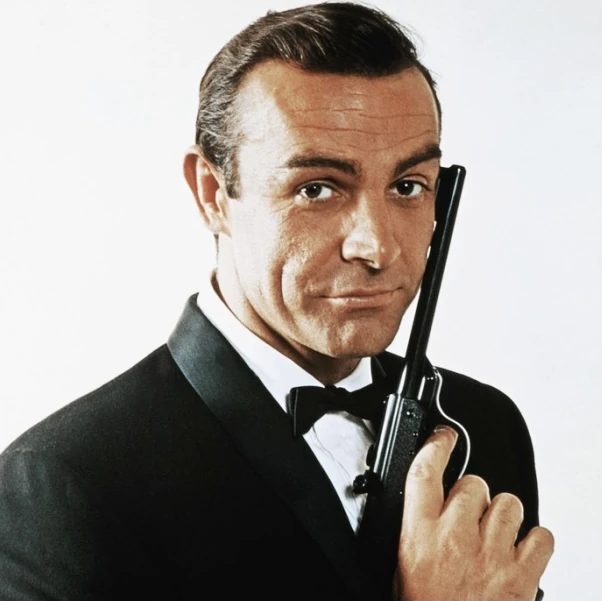 |
| Sean Connery as James Bond, one of the most famous spies in popular culture |
One of the best-known spy cases of the Cold War was the passing of American nuclear secrets. The "Atomic Spies" provided critical information about the atomic bomb to the Soviet Union. Most of the Atomic Spies were tried and sentenced, although in some cases, strong testimonies and confessions were admitted as fabricated later on. Two of the most famous spies on this list are Julius and Ethel Rosenberg.
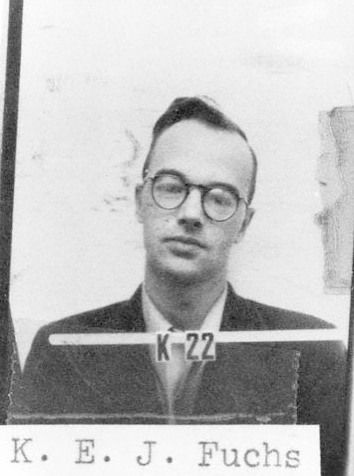 |
| Klaus Fuchs, one of the Atomic Spies |
 |
| Ethel and Julius Rosenberg |
The Rosenbergs' fate caused outrage both in America and internationally. Some believed that their crimes were undeserving of the death penalty; others thought they were innocent. Major novels painted highly sympathetic portraits of them, portraying them as victims of vindictive FBI officials. However, in the early 1990s, the release of Soviet intelligence information confirmed the Rosenbergs' involvement in espionage.
Thursday, January 17, 2019
A Quick Guide to First-Generation Jet Fighters
The jet engine had ushered in a new age of aviation. A new age that saw aircraft going higher and faster than ever thought possible. Both sides of the Iron Curtain rushed to field aircraft powered by these revolutionary new engines.
The threat of fast Soviet jet bombers still loomed high for the Strategic Air Command. Thus, a requirement was issued for a fast interceptor. Northrop decided that guns were not effective enough for taking down nuclear bombers, and so armed their new aircraft, the F-89 Scorpion with 104 unguided rockets, to be fired in salvos aimed by another new feature: Radar. The rocket's weren't the Scorpion's most unconventional armament, however. 350 F-89J aircraft carried the MB-1 Genie nuclear 'bomber buster' unguided rocket. More like bomber vaporizer.
America was not unchallenged in the air-power business though. The Soviet Mikoyan-Gurevich design bureau had previously done some research on jets (MiG-9), but their first outright successful jet fighter was the MiG-15. Armed with two big 23mm autocannon and an utterly massive 37mm autocannon, the MiG was a powerful aircraft in its own right, proving itself over Korea in the first jet-to-jet dogfights in history.
The MiG-15 was good and all, but the Soviet Union needed better. The 15 had automatic air-brakes that would deploy at mach .92 (.92 times the speed of sound) to avoid breakup. Mikoyan and Gurevich decided to strengthen the air-frame, removing the need for the air-brakes and allowing much higher speeds. The armament and engine were kept the same, but there were many small improvments done to the wings and air-frame. Even over Vietnam, it was a very real threat to even the supersonic F-100 Super Sabres seen over Korea.
The United Kingdom did not want to fall behind. After all, they were the second country to field a jet fighter. The de Havilland works took input from the RAF and the Fleet Air Arm and designed the Vampire and Sea Vampire (a carrier modification of the original). Armed with four reliable 20mm Hispano Mk. V autocannon, the twin-boom Vampire served most prominently in West Germany as an interceptor.
The RAF was satisfied with the Vampire, but by 1953 it was becoming obsolete. Rolls-Royce had just finished development of its powerful new Avon engine, and it was decided that Hawker would design a new air-frame around the engine. Thus, the Hunter was born. It was fast. Like, 1953 world speed record fast. Armed with four 30mm ADEN autocannon, it was a force to be reckoned with on both sides of the the iron curtain.
Defining Feature of this Generation: Jet Engines
To understand the reasons behind the revolutionary new aircraft, we must first understand how a jet engine allows higher speeds. Until 1938, all aircraft had been propelled by internal combustion engines driving propellers. Propellers are fine for normal aircraft, but people wanted to go higher and faster. To go faster, you could just spin the propeller faster. But eventually a limit is reached where either the propeller disintegrates from spinning too fast, or the blades go supersonic, creating a huge amount of noise and vibration, breaking the propeller (again) or shredding the gearbox. Instead of spinning a big propeller on the nose of the aircraft, jets spin a small propeller inside the engine. Okay, I'll admit it's not that simple. So here's a picture so I don't have to write an essay describing how jets work.
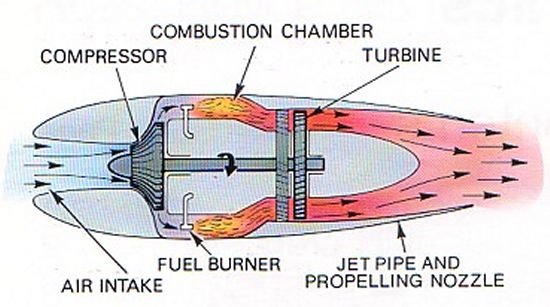 |
| A simple centrifugal-flow engine, as used in many early jests, including the MiG-15 and Vampire |
Basically, the exhaust velocity was much higher than that of a propeller, allowing for higher speeds.
The Aircraft
Suddenly, aircraft designers no longer had to fit huge V-12 and radial engines in their aircraft, instead only needing the rear fuselage or wings to mount the small turbojets. This left the rest of the aircraft free for aerodynamic improvement and better weapon mounting.
The US developed many jet fighters in the late 40's, testing out new ideas, techniques, and tactics. The only one of these that was built in great numbers was the famous F-86 Sabre. Armed with a battery of six tried and true .50 caliber machine guns, the bright, shiny aluminium Sabre is still the image of early American jet power.
 |
| Sabres on the ground in Korea |
 |
| An elegant aircraft, from a more civilized time |
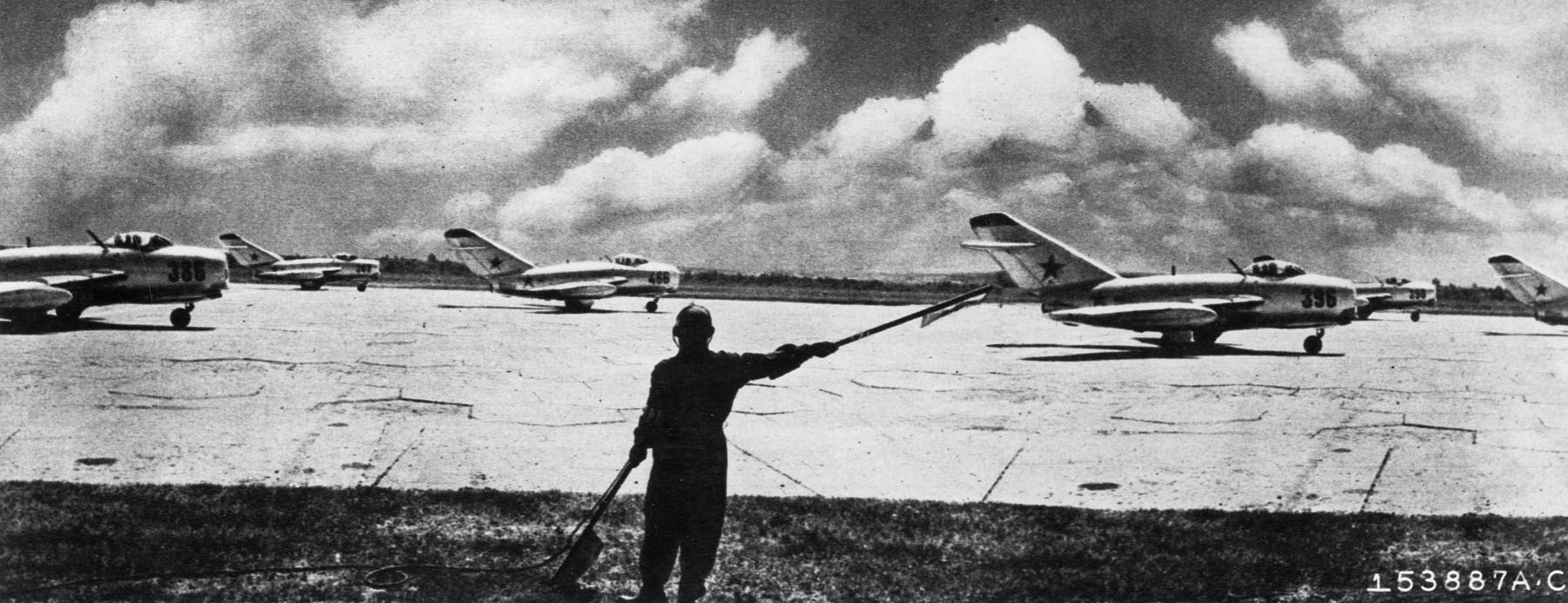 |
 |
| nyoooom |
The United Kingdom did not want to fall behind. After all, they were the second country to field a jet fighter. The de Havilland works took input from the RAF and the Fleet Air Arm and designed the Vampire and Sea Vampire (a carrier modification of the original). Armed with four reliable 20mm Hispano Mk. V autocannon, the twin-boom Vampire served most prominently in West Germany as an interceptor.
 |
| A flight of RAF Vampires over Egypt, 1952 |
The RAF was satisfied with the Vampire, but by 1953 it was becoming obsolete. Rolls-Royce had just finished development of its powerful new Avon engine, and it was decided that Hawker would design a new air-frame around the engine. Thus, the Hunter was born. It was fast. Like, 1953 world speed record fast. Armed with four 30mm ADEN autocannon, it was a force to be reckoned with on both sides of the the iron curtain.
The first generation slowly ended with the introduction of the air-to-air missile. Suddenly, engagements could be had outside of visual range. This caused an abrupt switch in aircraft design, going from a focus on maneuverability to a focus on pure speed. Some late first-gen jets such as the Hunter and the F-89 Scorpion were upgraded and armed with air-to-air missiles, but proved no match for the supersonic missile-carrying jets of the future. This marks the point where the complexity of aircraft started to rise exponentially, integrating radar, infra-red, fly-by-wire, and much more into the aircraft to make it the ultimate plane-killer.
 |
| An F-89 Scorpion with six GAR-1/2 Falcon infrared homing missiles on the wingtip pods. |
Tuesday, January 15, 2019
Young Stalin

Iosif Vissarionovich Dzhugashvili, aka Joseph Stalin, was born on December 18, 1879, in the peasant village of Gori, Georgia. Stalin's father was a cobbler and his Mother was a washerwoman. As a child, Stalin was widely regarded as weak by his counterparts. At the age of seven, he contracted smallpox, which left his face scarred. A few years later, he injured his left arm, leaving it slightly deformed. The other kids in the village treated him with cruelty and inferiority. Due to his treatment, Joseph began a quest for respect and power; however, along with this quest he developed a cruel streak for those he disliked.
In 1888, Stalin was enrolled in a church school. He excelled and by 1894 gained a scholarship to Tiflis Theological Seminary. Within a year, Stalin came into contact with Messame Dassy, which was a secret Georgian secession organization. The organization had a strong affinity for socialism and introduced Stalin to the writings of Karl Marx and Lenin. The rest is history.
Winston Churchill After World War II
Shortly after the Second World War, Winston Churchill's Conservative Party lost the election of 1945. Churchill was replaced by Clement Attlee for the position of prime minister; however, for the next five years, he still served as the Leader of the Opposition. The leader of the opposition is responsible for keeping a balance of power between parties in the British government. Usually, the second largest party's leader gets this role. As the Leader of the Opposition, Churchill furthered his influence in the post-war affairs. In 1946, he gave his Iron Curtain Speech, inciting increased conflict between the West and Soviets. Churchill spoke against the expansionist Policies of Stalin and the creation of the Eastern Bloc.
During the General Election of 1951, Churchill's party had won the election; thus, this allowed Churchill to become prime minister a second time. For the next four years, Churchill lead Britain; however, as he aged, his health began slowing down. In 1955, Churchill resigned from the Cabinet. On January 24, 1965, Churchill passed away. He was granted an honorable state funeral and buried in his family plot in St Martin's Church, Bladin.
During the General Election of 1951, Churchill's party had won the election; thus, this allowed Churchill to become prime minister a second time. For the next four years, Churchill lead Britain; however, as he aged, his health began slowing down. In 1955, Churchill resigned from the Cabinet. On January 24, 1965, Churchill passed away. He was granted an honorable state funeral and buried in his family plot in St Martin's Church, Bladin.
Red Army
It was an army force and the air force of Russian Krasnaya Armiya, Soviet army created by the Communist government after the Bolshevik Revolution of 1917.

Around January 1918 the Council of the people's commissars made a workers' and peasants' Red Army on a voluntary basis. In 1921 about 50,000 officers served in the army. The number of communist party increased among the Rank from 19 - 49 percent From 1925 - 1933. It was left all alone in 1946.
.

Around January 1918 the Council of the people's commissars made a workers' and peasants' Red Army on a voluntary basis. In 1921 about 50,000 officers served in the army. The number of communist party increased among the Rank from 19 - 49 percent From 1925 - 1933. It was left all alone in 1946.
.

The UN
The UN, or United Nations, is a global organization that serves to keep the peace between countries and works like a governing body for the whole world. However, the decrees that the UN make are not enforced by any physical means and are more like hard suggestions. One thing the UN can do is make the group decision to put trade sanctions on a nation, like North Korea right now, as punishment for not following the group decisions. It was created in 1945 and is closely related to the League of Nations, but its internal architecture is designed differently to account for the problems the LoN encountered. Such problems include having 5 "Superpower" countries that can veto any decision because they have the biggest populations and most resources that would most likely be used in any kind of action decided upon. These nations are the USA, UK, China, Russia (previously the Soviet Union), and France. The rest of the 10 countries rotate in and out on this section of the UN, called the Security Council. There is also a General Assembly which is comprised of 193 nations. Obviously, these numbers have grown hugely since its inception in San Francisco of 1945. Even today, the UN continues to deal with humanitarian issues like global warming or dictatorships.
Monday, January 14, 2019
George Kennan & The Long Telegram
George Kennan, born in 1904 in Wisconsin, began a life of foreign service at a very young age. In 1925 at only 21 years old, Kennan looked to the Foreign Service School in Washington to further his education towards a goal of being a foreign service agent to the United States. In 1931, after finishing his education, including the Russian language, he was positioned in Latvia, only to be restationed in Moscow soon after. He remained in Russia as a foreign diplomat, gaining intelligence on communism and the intents and goals of the Soviet Union. Being so close to Stalin gave Kennan an amazing outlook on the possibilities of a communist future throughout the world. Feeling unheard, he wrote the famous 8,000 word-long telegram, "The Long Telegram." In this telegram, he wrote that Stalin's aims were to expand as much as possible, warning the United States of the terrible repercussions that capitalism and self-determination would face should this happen. Kennan, unwilling to be found and punished by the Soviet Union, used the pseudonym "X" in order to cloak his identity. Thankfully, the famous telegram frightened Washington DC, alerting them to the possibility that war was approaching, as was the rise of communism.




Sunday, January 13, 2019
Joseph Stalin
Joseph Stalin was born on December 18th, 1879. He was successful in school and later came in contact with the socialist/communist ideas of Karl Marx and Vladimir Lenin. He began devoting his time to the revolutionary movement, where he joined the Social Democratic Party and began working under Stalin. After the revolution in 1917, various individuals struggled for positions of control, and Stalin was appointed to a newly created Communist Party. From there he was able to seize power and gradually make his way as dictator of the Soviet Union by eliminating all opposition. Stalin reversed Bolshevik agrarian policies by taking away land previously given to peasants. He believed in collectivization and caused a famine that lead to the death of millions of Russian peasants. Stalin's policies quickly strengthened the Russian economy and modernized the nation as a whole, but at the cost of millions of lives. As World War II got closer, Stalin made the decision of allying with Hitler. On the 22nd of June 1941, Hitler declared war on Russia, making it part of the Allies throughout the rest of WWII. Despite suffering massive casualties the Russian army was able to push back Hitler into Germany and helped the Allies win the war in Europe. Regardless of their alliance in WWII, Stalin and the rest of the allies did not maintain stable relationships both during and after the war over territorial matters. Stalin wanted to keep most of East Europe under Soviet control after the war ended, thus bringing what was called the Iron Curtain over Eastern Europe. Stalin passed on March 5th, 1953, but his influence reigned over Europe until the 1990s where the Soviet Union was finally taken down.
Subscribe to:
Comments (Atom)
Killing Osama
After being elected President, Obama accomplished many things but the most notable is ordering the killing of Osama Bin Laden. After several...
-
The Industrial Revolution was an era of technological advancement that had a long-lasting global impact. Starting in the late 1700s, the de...
-
The remote windy beaches of Kitty Hawk, North Carolina, were the scene of one of the most significant events of the early 20th century. On D...
-
The End of the Horse & Buggy Era In 1865, the average American home was lit by fire. Candles and oil lamps were common light source...

.jpg)
